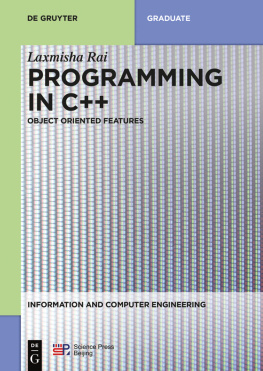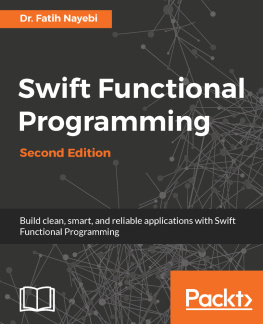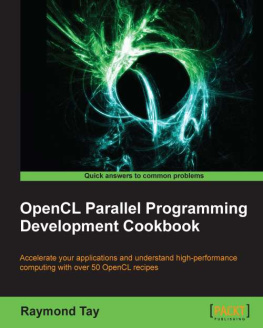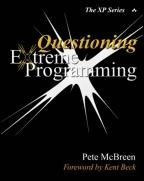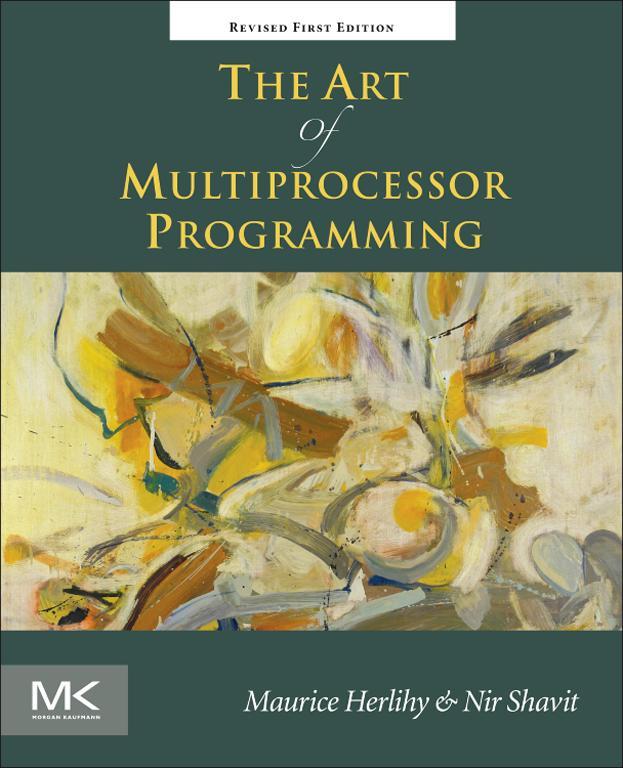Acknowledgments
We would like to thank Doug Lea, Michael Scott, Ron Rivest, Tom Corman, Radia Perlman, George Varghese and Michael Sipser for their help in finding the right publication venue for our book.
We thank all the students, colleagues, and friends who read our draft chapters and sent us endless lists of comments and ideas: Yehuda Afek, Shai Ber, Martin Buchholz, Vladimir Budovsky, Christian Cachin, Cliff Click, Yoav Cohen, Dave Dice, Alexandra Fedorova, Pascal Felber, Christof Fetzer, Shafi Goldwasser, Rachid Guerraoui, Tim Harris, Danny Hendler, Maor Hizkiev, Eric Koskinen, Christos Kozyrakis, Edya Ladan, Doug Lea, Oren Lederman, Pierre Leone, Yossi Lev, Wei Lu, Victor Luchangco, Virendra Marathe, Kevin Marth, John Mellor-Crummey, Mark Moir, Dan Nussbaum, Kiran Pamnany, Ben Pere, Torvald Riegel, Vijay Saraswat, Bill Scherer, Warren Schudy, Michael Scott, Ori Shalev, Marc Shapiro, Yotam Soen, Ralf Suckow, Seth Syberg, Alex Weiss, and Zhenyuan Zhao. We apologize for any names inadvertently omitted.
We thank Mark Moir, Steve Heller, and our colleagues in the Scalable Synchronization group at Sun Microsystems for their incredible support during the writing of the book.
Thanks to all who have sent us errata to improve this book, including: Rajeev Alur, Matthew Allen, Karolos Antoniadis, Cristina Basescu, Liran Barsisa, Igor Berman, Konstantin Boudnik, Bjoern Brandenburg, Martin Buchholz, Kyle Cackett, Mario Calha, Michael Champigny, Neill Clift, Eran Cohen, Daniel B. Curtis, Gil Danziger, Venkat Dhinakaran, David Dice, Wan Fokkink, David Fort, Robert P. Goddard, Brian Goetz, Bart Golsteijn, K. Gopinath, Enes Goktas, Jason T. Greene, Dan Grossman, Tim Halloran, Muhammad Amber Hassaan, Matt Hayes, Francis Hools, Ben Horowitz, Barak Itkin, Paulo Janotti, Kyungho Jeon, Ahmed Khademzadeh, Irena Karlinsky, Habib Khan, Omar Khan, Namhyung Kim, Guy Korland, Sergey Kotov, Doug Lea, Yossi Lev, Adam MacBeth, Kevin Marth, Adam Morrison, Adam Weinstock, Mike Maloney, Tim McIver, Sergejs Melderis, Bartosz Milewski, Mark Moir, Adam Morrison, Victor Luchangco, Jose Pedro Oliveira, Dale Parson, Jonathan Perry, Amir Pnueli, Pat Quillen, Binoy Ravindran, Roei Raviv, Sudarshan Raghunathan, Jean-Paul Rigault, Michael Rueppel, Mohamed M. Saad, Assaf Schuster, Marc Shapiro, Nathar Shah, Huang-Ti Shih, Joseph P. Skudlarek, James Stout, Mark Summerfield, Deqing Sun, Seth Syberg, Fuad Tabba, Binil Thomas, John A Trono, Thomas Weibel, Adam Weinstock, Jaeheon Yi, Zhenyuan Zhao, Ruiwen Zuo, Chong Xing.
Product Note
This book offers complete code for all the examples, as well as slides, updates, and other useful tools on its companion web page at: http://store.elsevier.com/product.jsp?isbn=9780123973375
Preface
This book is intended to serve both as a textbook for a senior-level undergraduate course, and as a reference for practitioners.
Readers should know enough discrete mathematics to understand big-O notation, and what it means for a problem to be NP-complete. It is helpful to be familiar with elementary systems constructs such as processors, threads, and caches. A basic understanding of Java is needed to follow the examples. (We explain advanced language features before using them.) Two appendixes summarize what the reader needs to know: covers multiprocessor hardware architectures.
The first third covers the principles of concurrent programming, showing how to think like a concurrent programmer. Like many other skills such as driving a car, cooking a meal, or appreciating caviar, thinking concurrently requires cultivation, but it can be learned with moderate effort. Readers who want to start programming right away may skip most of this section, but should still read which cover the basic ideas necessary to understand the rest of the book.
We first look at the classic mutual exclusion problem ().
We think it is essential that anyone who wants to become truly skilled in the art of multiprocessor programming spend time solving the problems presented in the first part of this book. Although these problems are idealized, they distill the kind of thinking necessary to write effective multiprocessor programs. Most important, they distill the style of thinking necessary to avoid the common mistakes committed by nearly all novice programmers when they first encounter concurrency.


